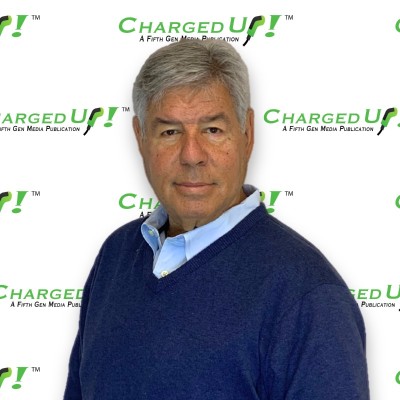Ford’s Low-Rate Push Now Covers F-150 Lightning—Here's How Fleets, Sites, and Landlords Should Respond
- Rich Berliner

- Oct 8
- 3 min read
In case you missed it: Ford has been running a short, end-of-month program that lets lower-credit F-150 shoppers get the same promotional rate as top-tier buyers. And yes—that offer extends to the F-150 Lightning. On top of that, we’re seeing separate low-APR deals on certain Lightning trims (think ~2.9% for 60 months) and occasional bonus cash. The catch? Offers change by region, dealer inventory, trim, and timing. You have to check your local dealer or Ford’s offers page to see what’s live. Here's why should charge point operators (CPOs), landlords, and fleet managers care about finance promotions like these.
Payment drives adoption (for retail and fleets)
Why should charge point operators (CPOs), landlords, and fleet managers care about a finance promo? Because monthly payment drives adoption. Most buyers don’t buy a sticker price; they buy a payment. If a Lightning that looked out of reach at 6–7% APR suddenly drops to a “prime-like” rate, fence-sitters move. When more trucks go electric, your sites see more sessions—especially in suburbs and light-industrial areas where pickups live and work. It’s the same story for fleets: when the finance desk knocks down per-vehicle cost of ownership, EV truck pilots become full-fleet programs faster.
Context after the federal credit’s expiration
Incentives like these land at an opportune time after the federal $7,500 purchase credit expired on September 30th. Automakers are cushioning that hit with low APRs, lease programs, and dealer cash. For fleets, leasing is especially useful because it keeps monthly payments predictable and can bundle maintenance, telematics, and even charging hardware cost. The theme is simple: keep the monthly cost of ownership and lease steady and EV adoption will continue.
What CPOs, landlords, and fleets should do now
Plan for a near-term bump in EV trucks wherever the deals are strongest. When payments drop, conversions follow. That means mixed-use DC fast charging near home-improvement corridors, trade hubs, and commuter routes will see the earliest lift. For landlords, that dwell turns into coffee and quick-serve sales; for operators, it’s healthier weekend throughput. Fleets should pair these public nodes with depot L2 to keep most energy cheap and controlled, using public DCFC for top-ups and exceptions.
Budget for waves, not a straight line. Promotions vary by month and ZIP code. A market can add a few hundred Lightnings in a quarter, then cool when offers change. Build a cushion into your utility budget. A modest 4-hour onsite battery won’t fulfill all your energy needs; it will merely reduce your biggest spikes and stabilize demand charges during peak weekend usage spikes. Focus the battery's work on the specific time windows where the utility charges the highest demand rates. Fleets can mirror this strategy by staggering charge windows and setting max-kW caps to avoid bill surprises.
Sell predictability. Car buyers love a stable car payment; new EV drivers love a clear price at the plug. If your tariff allows, offer simple off-peak pricing or memberships so drivers know what a session will cost before they plug in. For fleets, lock multi-year site access and pricing bands tied to managed-charging participation; you’ll get better load shape and they’ll get cost certainty.
Colorado incentives: dealer vs. tax-time
We’re often asked where state incentives show up—in the dealership or at tax time. In Colorado, there are two different levers:
Vehicle Exchange Colorado (VXC): A point-of-sale rebate at participating dealers for income-qualified buyers who trade in an older gas car. Starting Nov. 3, 2025, rebates rise to $9,000 (new EV/PHEV) and $6,000 (used). This reduces the up-front price on the buyer’s worksheet—no waiting until tax season.
State EV Income-Tax Credit: Separate from VXC, this credit is typically claimed on a resident's state tax return, so the benefit arrives at filing. (Some retailers help estimate or structure around it, but by default it’s a tax-time benefit.)
For fleets, the split matters. If your drivers qualify for employee purchase programs like VXC, you’ll see immediate monthly-payment relief. For corporate fleet acquisitions, plan around the state tax credit timing and consider leasing to smooth cash flow while interest rates remain elevated.
A note on risk
The “same-rate” push is designed to attract more lower-credit buyers. Ford says underwriting standards still apply—the promo changes the price of money, not who qualifies—but don’t assume these offers are permanent. Expect them to come and go with the economy and inventory.
Be ready for payment-driven pulses
Ford has integrated the financing and incentive programs for the electric F-150 Lightning into the exact same, proven, high-volume system they use to sell their traditional, highly popular gasoline F-150 (the "half-ton truck"). Here's how you can benefit: put chargers where those trucks actually live and work, buffer peaks with a small battery, keep pricing simple, and—if you’re in Colorado—stack point-of-sale VXC with the tax-time state credit where eligible. The finance office just handed public charging a tailwind. Make sure your locations and fleet plans are ready to catch it—and keep it.






Comments